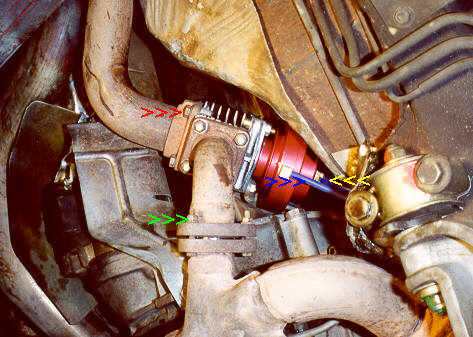I am not surprised that some people might think the TiAL or any Dual Port wastegate is no better than a standard wastegate, especially if they have read the manual for a TiAL.
In the Tial manuals the diagrams show the wastegate being plumbed up just like a 944 wastegate is as standard, even if you read many of the electronic boost controllers you get the same impression.
However a TiAL comes into its own when you use it as a Dual Port Wastegate, where you use the boost pressure to help keep the wastegate closed, as well as opening it.
With the right spring, and the right manual or electronic boost controller, plumbed up the right way, a dual port wastegate will clamp the valve of the wastegate in a neutral or closed position as soon as you start making any boost, and the higher the boost, the higher the clamping force.. Once the boost pressure on the opening side of the wastegate reaches a higher pressure than the combination of the spring pressure (as well as a factor of exhaust back pressure versus crossover pressure) and the regulated boost on the other side of the diaphragm, the valve will open quite quickly, spooling the turbo down, which therefore makes less boost and causes the valve to be forced closed again.
However if you look at the manuals, they normally show the TiAL in a single port mode, which does indeed make it pointless compared to the standard wastegate, other than quality of manufacture and adjust-ability of spring rates.
Electronic boost controllers do things in the same kind of way, although even with these I do not plumb them in as per the manuals, there are some tricks to getting the best out of manual and electronic boost controllers, as well as explaining, as well as avoiding, some of the negative characteristics of electronic and manual boost controllers boost curves, as can be seen on dyno charts from time to time.
There is a much better way, but that is something else I am working on.











